Interview with Daniel Roizman on X2: Xmen United
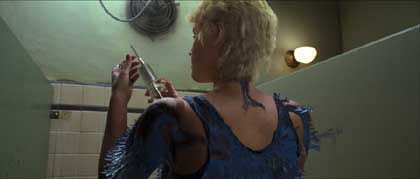 CGC: Could you begin by telling us a bit about your own background and Kolektiv?
CGC: Could you begin by telling us a bit about your own background and Kolektiv?
DR: I started my career at Alias|Wavefront in Toronto, well actually, it was Alias Research at the time, until SGI bought both Alias and Wavefront TDI and merged them. I worked as a Product Specialist with my specialty being MEL and Dynamics. After about 4 years at A|W, I left to work in production and started with Kleiser-Walczak studios in Massachussets. In the 5 years since, I’ve worked with several different companies, big and small.
I started the Kolektiv in 2000. The company motto, to quote our site, is to help visual effects companies achieve their production goals better and more efficiently through training, integration and consultation services.
Initially, there were 2 or 3 people working under the kolektiv and we contracted out their services to different studios. We then started to author advanced training DVDs and Alias|Wavefront became our exclusive distributor. Our first software venture came from a suite of plug-ins that I had developed while consulting on a project. The plug-ins added a set of new features to Maya’s dynamics like a proper curve field and the ability to use any of Maya’s shading networks to drive particle attributes interactively. While some areas of Maya had significat upgrades, Maya’s dynamics have remained pretty much the same since version 1.0, and these are tools that I had been requesting for since I was a Product Specialist.
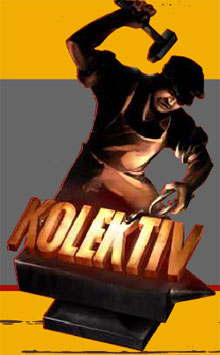
CGC: What was your role in the production of X2: X-Men United?
DR: For X2, Kleiser-Walczak hired the kolektiv to re-tool the Mystique morph effect. They had decided to change their pipeline from a multi-patch NURBS data set to a very dense, polygonal data set. The original tools that I developed for the first X-Men movie were all designed to work with NURBS, so the re-tooling required a significant R+D effort. The new
tools were all bundled together into a suite of plug-ins that the kolektiv now sells, called Stroika Animation.
CGC: You also worked on the first X-Men movie. How did the process evolve since the first film?
DR: On the first film, the process of applying the morph effect required baking out a series of animated texture maps, applying them through a custom Artisan mel script and a custom API deformer that I had written, and then baking out the simulation. For X2, with the new toolset, textures did not need to be baked out and the entire effect could be run interactively with deformations and scale animation being driven by a shading network.
CGC: Could you describe exactly what happens when Mystique transforms?
DR: There are three parts to Mystique’s transformation, a shader effect, a 3D morph between Mystique’s geometry and whomever she is morphing to and the animation of the scales on her body.
For X2, they wanted to see more “meat” in the lead edge of the transformation. A custom Renderman shader was used that incorporated several techniques including Global Illumination, HDR images as well as some custom refraction. Kevin Noone, Kleiser-Walczak’s modeling and texturing lead, developed a really cool shader that would push Mystique’s texture in the direction that the morph was moving. This made for a really nice effect that looked like the skin bunching up before it morphed.
The 3D morph uses the Non-Linear Blendshape that is part of Stroika Animation. With Maya’s Blendshape, you basically have a linear control over how the blending occurs over an object, with all points in the object receiving the same weighting. With the Non-Linear Blendshape, each point of the surface gets its own weighting based on a connected shading network. In the first movie, the animators used a combinations of lights and animated textures to control the morph. Where the final color was bright, Mystique would morph, where it was dark, she would remain the same. For X2, they decided to work with 2D procedural textures including a custom crack shader, developed by Kevin Noone. As the crack opened, the texture went from black to white, causing the points in the mesh to morph to their target.
That leads us to the scale animation. Mystique has several thousand scales on her body. For the shots where she wasn’t transforming, the scales were simply a displacement shader in Renderman. But in the shots where she had to transform, each of the scales was an individual piece of geometry. I worked with Simon Scherr, Kleiser Walczak’s lead animator and character setup wizard for the movie, to design a system that could procedurally animate thousands of scales. The first challenge was figuring out how to get the scales to stick to the polygonal surface as it deformed. For that, I developed a new constraint type for Maya called a Mesh Constraint. The constraint was optimized to handle thousands of objects constrained to a single mesh while maintaining their position and orientation relative to the mesh during deformations. Before constraining the scales, Simon added a transform node above each of the scales so that the parent transform node could handle all of the constraint information while the node below was animated independently.
For the procedural animation of the scales, Simon animated a single scale performing a grow,flutter and settle animation cycle. I wrote another plug-in called a Render Sampler Info node that basically allowed Simon to connect the crack shader that was driving the morph to each of the scales on Mystique. Since each of the scales knew where in UV space they were connected to Mystique’s geometry, the Render Sampler Info node was able to evaluate the shader for each scale. When the resulting shading value reached a certain threshold, the animation would be copied to the scale at that frame. This resulted in each scale getting a different start frame. Actually, there were three or four different types of scales on her body, so the longer, narrow scales received different animation than the shorter, stubby scales.
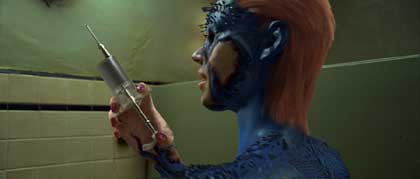
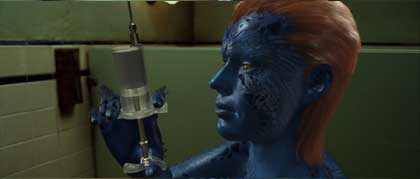 CGC: What is it you enjoyed doing the most on this project?
CGC: What is it you enjoyed doing the most on this project?
DR: I think it was the collaboration between myself and Kleiser-Walczak’s artists, mainly Simon Scher and Kevin Noone. Simon and Kevin would call with all kinds of requests and ideas for how they wanted the tools to work. They helped push me to develop solutions to problems that I wouldn’t have thought of or in some cases ones I originally thought too hard to implement.
I think it’s extremely important to develop software from within a production environment. I learned that when I was working as a Product Specialist at Alias|Wavefront during the development of Maya. There was always at least one internal production going on at A|W and it always involved product specialists and programmers. Programmers would get a chance not only to use each others tools and work with Maya as a whole, but they would also get a chance to experience hands on how the tools work together and figure out ways to improve the software. I think a big part of why Maya was so successful right out of the gate was that it was production proven before it ever entered production.
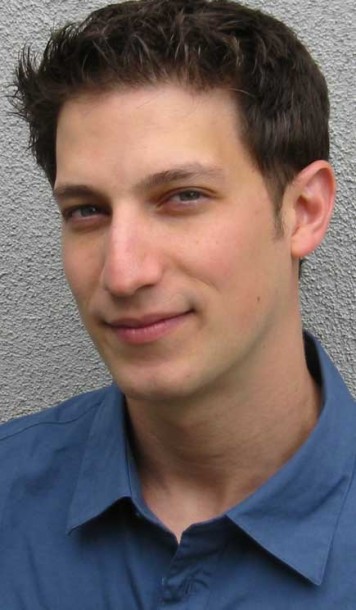 CGC: How many people are behind Kolektiv?
CGC: How many people are behind Kolektiv?
DR: I like to think that the entire CG community is behind the kolektiv! But I think you are probably getting at how many people work for the kolektiv. Right now, we have 5 people actively involved, but that number varies depending on whether we are producing new videos for Alias|Wavefront and how busy the consulting services are.
CGC: What other products does Kolektiv offer and who uses them?
DR: The tools that we developed for Kleiser-Walczak’s work on X2 have been roled into a package called Stroika Animation. We also have another package of plug-ins called Stroika Dynamics that we have been selling for almost 2 years now.
Zoic Studios has been using both of our products to create the effects in Buffy the Vampire Slayer and Angel and recently purchased several more seats for the final episode of Buffy. Tippet Studios is using the tools on the Matrix sequels, Sony Imageworks has recently purchased several seats for current and upcoming productions and we have dozens of post production facilities around the world using the tools. The tools have really taken off and are starting to become a staple of animators toolkits. We find that as the artists move from project to project and, as is often the case, from company to company, they request the tools wherever they go.
We also currently have 5 training DVDs being sold through Alias|Wavefront and with each upgrade to Maya 5.0, customers are now receiving our “Patch Modeling For Visual Effects” training DVD for free.
Related Links:
